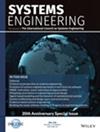使用叠加场景的系统方法调查和分析无人机探测系统
IF 1.6
3区 工程技术
Q4 ENGINEERING, INDUSTRIAL
引用次数: 0
摘要
无人机在民用和军事领域的广泛应用,给作战方面的安全和安保考虑带来了新的挑战。在民用空域使用中小型无人机,即使获得监管部门的批准,也可能无法提供安全保障。对无人机的检测是为恶意无人机带来的挑战提供缓解机制的第一步。讨论了传感器及其特性对检测过程的影响。提出了一个优点值来比较采用这些传感器的系统。本文的重点是使用应用于场景的基于系统的方法来检查无人机探测系统(DDS)的频谱。为了在系统之间进行公平的比较,使用两个场景来讨论系统特征。接下来,将对这些场景中的DDS进行调查。分析工件,使用系统模型筛选信息。提出了一种使用评分机制对这些工件进行评估的方法。提出了简单而新颖的方法来评估与DDS有关的信息内容。这种方法使研究人员、系统架构师、系统设计师、解决方案提供者和系统集成商能够意识到系统和子系统级别的各种挑战。所提出的方法有助于提供指向文献的指针,其中可以获得有关挑战和具体解决方案的信息。本文章由计算机程序翻译,如有差异,请以英文原文为准。
A survey and analysis of drone detection systems using a systems approach superposed on scenarios
The proliferation of drones in civil and military applications has brought about new challenges in the context of safety and security considerations of operational aspects. The use of small‐ and medium‐sized drones in civilian airspaces even with regulatory approval may not provide guarantees of safety and security. Detection of drones is the first step towards providing a mitigating mechanism for challenges posed by mal‐intentioned drones. Sensors and their characteristics affecting the detection process are discussed. A figure of merit is proposed to compare systems employing these sensors. The key focus of the paper is the examination of the spectrum of drone detection systems (DDS) using a systems‐based approach applied to scenarios. In order to make an equitable comparison between systems, two scenarios are utilized to discuss system characteristics. Next, a survey of DDS in each of these scenarios is performed. Artifacts are analyzed, culling information using the systems model. An approach is proposed to perform evaluation of these artifacts using a scoring mechanism. Simple yet novel measures to assess the information content pertaining to DDS are presented. This approach enables researchers, system architects, system designers, solution providers, and system integrators to be aware of various challenges at the system and subsystem level. The proposed method helps to provide pointers to the literature where information about challenges and specific solutions can be obtained.
求助全文
通过发布文献求助,成功后即可免费获取论文全文。
去求助
来源期刊

Systems Engineering
工程技术-工程:工业
CiteScore
5.10
自引率
20.00%
发文量
0
审稿时长
6 months
期刊介绍:
Systems Engineering is a discipline whose responsibility it is to create and operate technologically enabled systems that satisfy stakeholder needs throughout their life cycle. Systems engineers reduce ambiguity by clearly defining stakeholder needs and customer requirements, they focus creativity by developing a system’s architecture and design and they manage the system’s complexity over time. Considerations taken into account by systems engineers include, among others, quality, cost and schedule, risk and opportunity under uncertainty, manufacturing and realization, performance and safety during operations, training and support, as well as disposal and recycling at the end of life. The journal welcomes original submissions in the field of Systems Engineering as defined above, but also encourages contributions that take an even broader perspective including the design and operation of systems-of-systems, the application of Systems Engineering to enterprises and complex socio-technical systems, the identification, selection and development of systems engineers as well as the evolution of systems and systems-of-systems over their entire lifecycle.
Systems Engineering integrates all the disciplines and specialty groups into a coordinated team effort forming a structured development process that proceeds from concept to realization to operation. Increasingly important topics in Systems Engineering include the role of executable languages and models of systems, the concurrent use of physical and virtual prototyping, as well as the deployment of agile processes. Systems Engineering considers both the business and the technical needs of all stakeholders with the goal of providing a quality product that meets the user needs. Systems Engineering may be applied not only to products and services in the private sector but also to public infrastructures and socio-technical systems whose precise boundaries are often challenging to define.
 求助内容:
求助内容: 应助结果提醒方式:
应助结果提醒方式:


